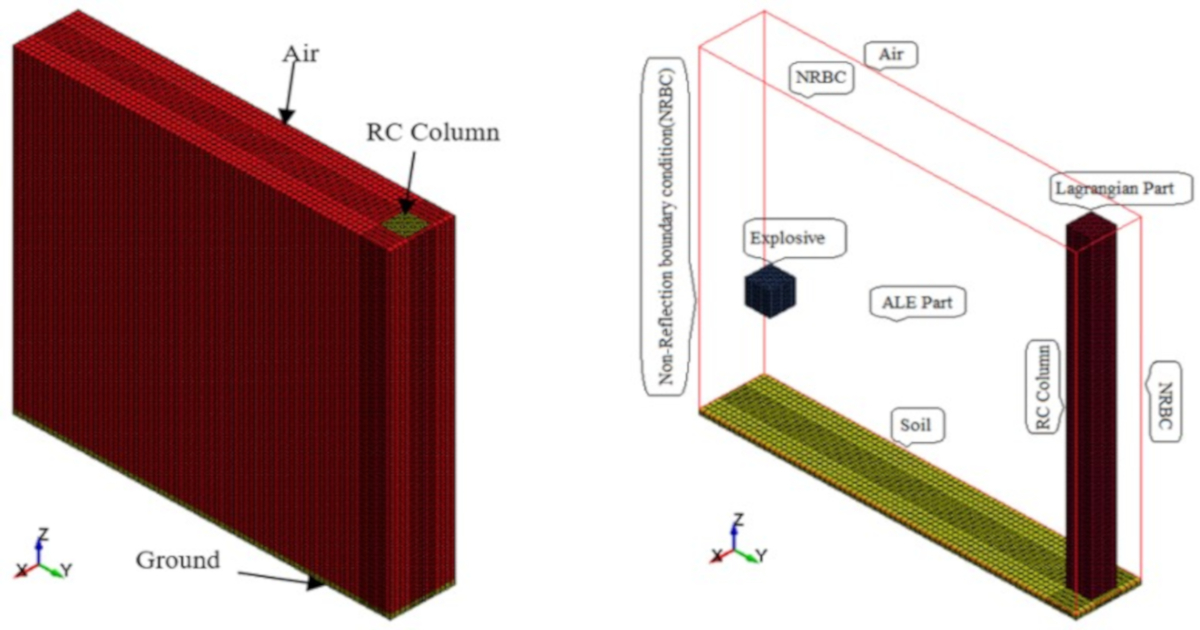Structural Performance and Damage Assessment of Reinforced Concrete Structures Exposed to High Strain Rate Loads
A special issue of Buildings (ISSN 2075-5309). This special issue belongs to the section "Building Structures".
Deadline for manuscript submissions: 10 January 2026 | Viewed by 9177

Special Issue Editors
Interests: control systems; structural systems
Interests: structural engineering; blast and impact loading; strengthening; damage assessment; finite element method
Special Issues, Collections and Topics in MDPI journals
Special Issue Information
Dear Colleagues,
Reinforced concrete (RC) structures might subject to severe impulsive loadings due to shock wave, blast wave or direct impact in their service life. Many impact and explosion incidents caused significant structural damages, which in turn generates huge amount of economic loss, and sometimes claimed many lives. Moreover, these incidents always induce significant psychological impact on the general societies. In response to threats from explosion and impact loads for human and infrastructure protection, the development of various impact and blast resistant design guidelines and scientific research has recently become a priority of many governments worldwide.
Therefore, the main aim of this Special Issue is Structural performance and damage assessment of reinforced concrete structures exposed to high strain rate loads. Topics include but are not limited to:
- Blast and impact loading;
- Finite element modeling;
- Damage assessment;
- Strain-rate effect;
- Structural strengthening;
- Structural dynamics;
- Protective structures;
- Structural response.
Prof. Dr. Chunwei Zhang
Dr. Masoud Abedini
Guest Editors
Manuscript Submission Information
Manuscripts should be submitted online at www.mdpi.com by registering and logging in to this website. Once you are registered, click here to go to the submission form. Manuscripts can be submitted until the deadline. All submissions that pass pre-check are peer-reviewed. Accepted papers will be published continuously in the journal (as soon as accepted) and will be listed together on the special issue website. Research articles, review articles as well as short communications are invited. For planned papers, a title and short abstract (about 250 words) can be sent to the Editorial Office for assessment.
Submitted manuscripts should not have been published previously, nor be under consideration for publication elsewhere (except conference proceedings papers). All manuscripts are thoroughly refereed through a single-blind peer-review process. A guide for authors and other relevant information for submission of manuscripts is available on the Instructions for Authors page. Buildings is an international peer-reviewed open access semimonthly journal published by MDPI.
Please visit the Instructions for Authors page before submitting a manuscript. The Article Processing Charge (APC) for publication in this open access journal is 2600 CHF (Swiss Francs). Submitted papers should be well formatted and use good English. Authors may use MDPI's English editing service prior to publication or during author revisions.
Keywords
- blast and impact loading
- finite element modeling
- damage assessment
- strain-rate effect
- structural strengthening
- structural dynamics
- protective structures
- structural response
Benefits of Publishing in a Special Issue
- Ease of navigation: Grouping papers by topic helps scholars navigate broad scope journals more efficiently.
- Greater discoverability: Special Issues support the reach and impact of scientific research. Articles in Special Issues are more discoverable and cited more frequently.
- Expansion of research network: Special Issues facilitate connections among authors, fostering scientific collaborations.
- External promotion: Articles in Special Issues are often promoted through the journal's social media, increasing their visibility.
- Reprint: MDPI Books provides the opportunity to republish successful Special Issues in book format, both online and in print.
Further information on MDPI's Special Issue policies can be found here.






